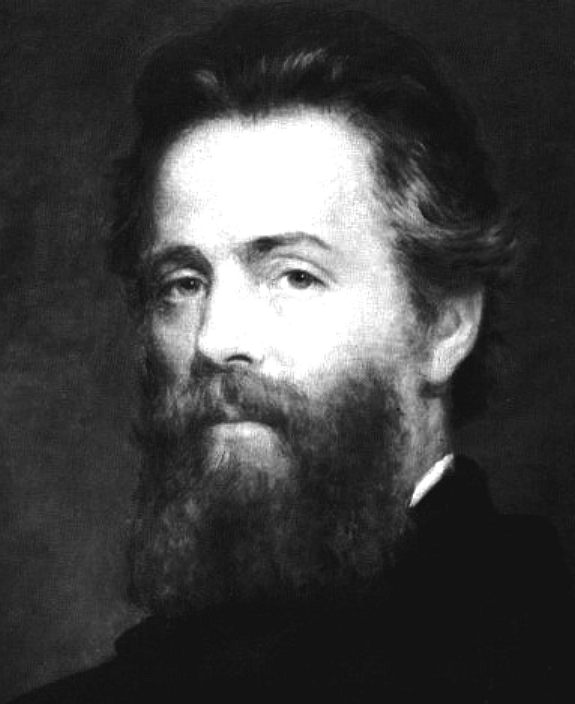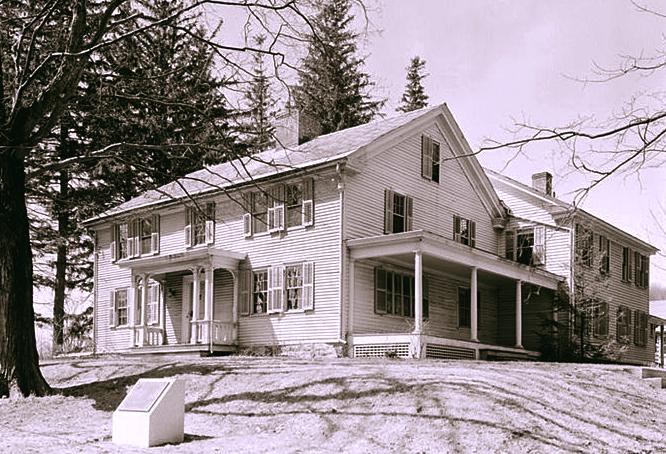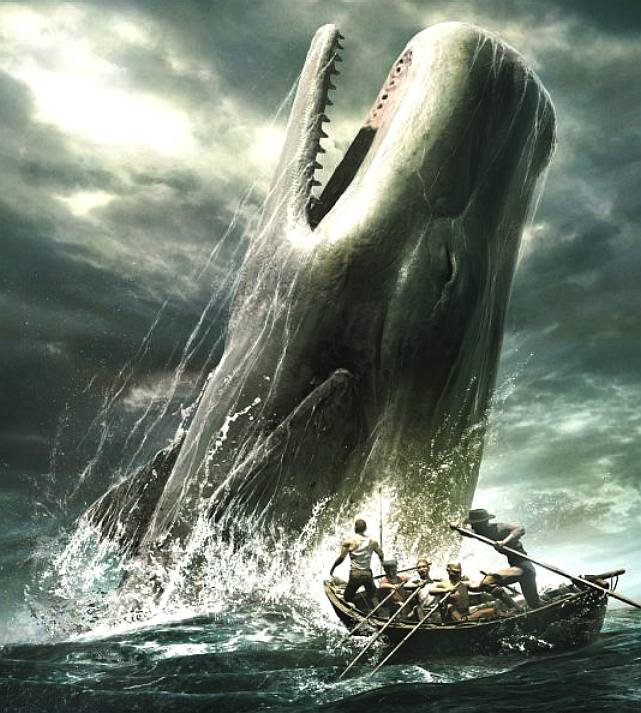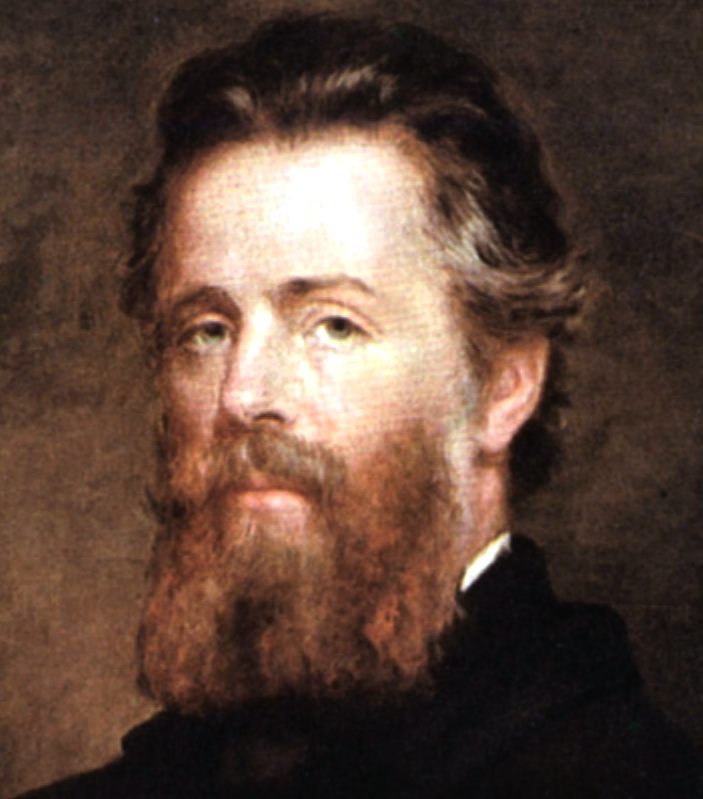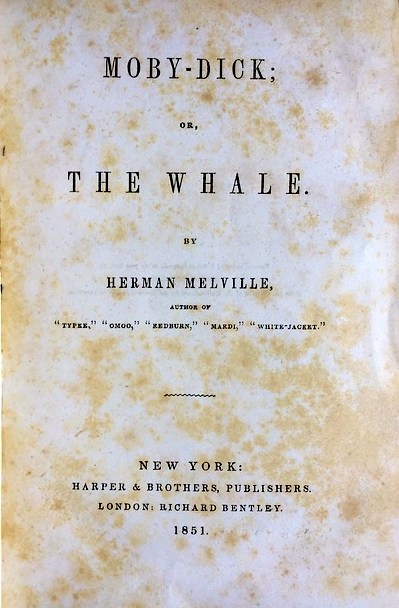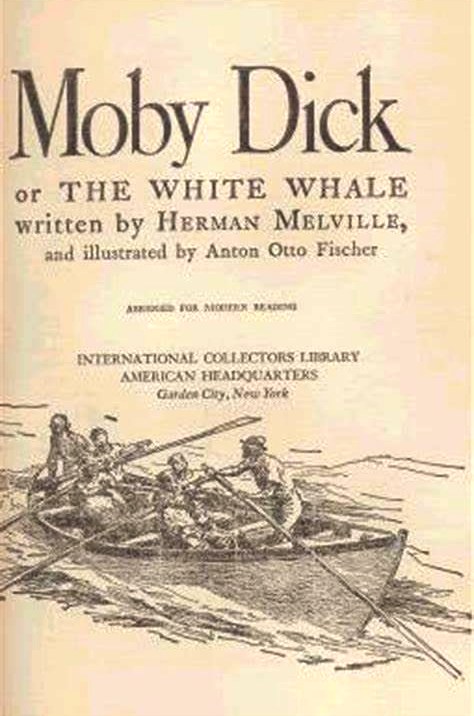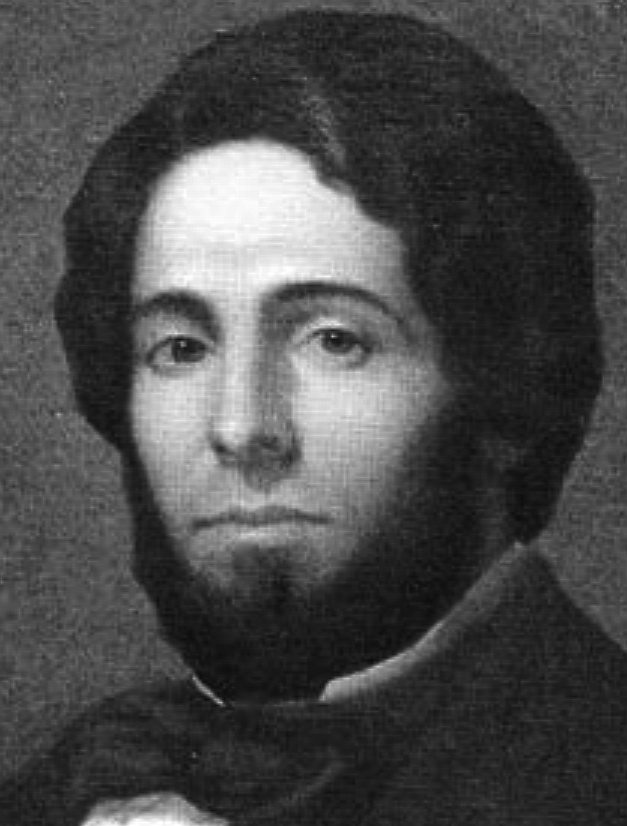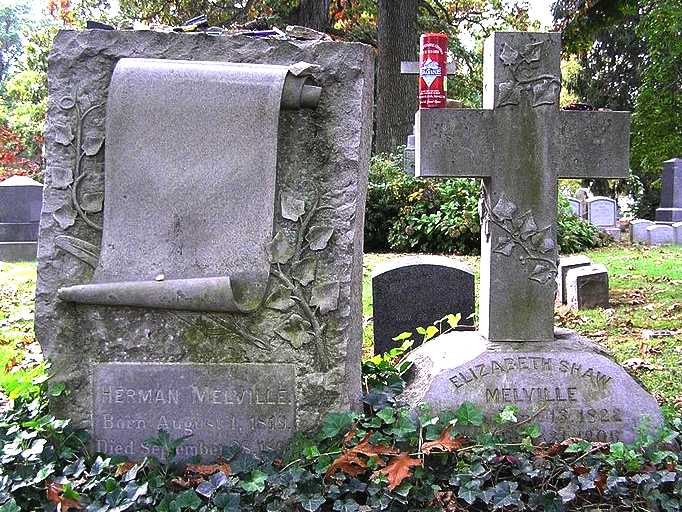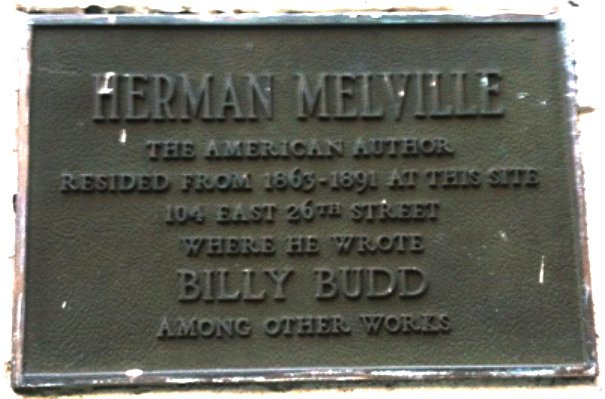|
Herman Melville
|
|||||||||||
|
When I learned that in publishing 'Moby Dick' poor Mr Melville went bankrupt, I was seriously disillusioned. How the author of such a work should be allowed by the publishing world to wither and die, is beyond me. The author simply was not appreciated in his time. But, I'm pleased to say, his story went on to become a Hollywood classic starring Gregory Peck as Captain Ahab.
Moby Dick was inspired by real events on the time, in the sinking of the Essex in 1820 by a giant sperm whale, and Mocha Dick, another sperm whale that was albino white. This whale sank 20 ships over a prolonged period with over 100 shipping encounters, before being finally killed in 1838 when rendering aid to a slaughtered calf and its mother.
Herman Melville
Herman Melville (August 1, 1819 – September 28, 1891) was an American novelist, short story writer, essayist, and poet. He is best known for his novel Moby-Dick. His first three books gained much contemporary attention (the first, Typee, becoming a bestseller), and after a fast-blooming literary success in the late 1840s, his popularity declined precipitously in the mid-1850s and never recovered during his lifetime. When he died in 1891, he was almost completely forgotten. It was not until the "Melville Revival" in the early 20th century that his work won recognition, especially Moby-Dick, which was hailed as one of the literary masterpieces of both American and world literature. He was the first writer to have his works collected and published by the Library of America.
Herman's Books:
Early life, education, and family
Herman Melville was born in New York City on August 1, 1819, the third of eight children of Allan and Maria Gansevoort Melvill. After her husband Allan died (& between 1832 & 1834), Maria added an "e" to the family surname — seemingly at the behest of Melville's brother Gansevoort. Part of a well-established and colorful Boston family, Melville's father spent a good deal of time abroad as a commission merchant and an importer of French dry goods. The author's paternal grandfather, Major Thomas Melvill, an honored participant of the Boston Tea Party who refused to change the style of his clothing or manners to fit the times, was depicted in Oliver Wendell Holmes's poem "The Last Leaf". Herman visited him in Boston, and his father turned to him in his frequent times of financial need.
The maternal side of Melville's family was Hudson Valley
Dutch. His maternal grandfather was General Peter Gansevoort, a hero of the Battle of Saratoga; in his gold-laced uniform, the general sat for a portrait painted by Gilbert Stuart, which is described in Melville's 1852 novel, Pierre, for Melville wrote out of his familial as well as his nautical background. Like the titular character in Pierre, Melville found satisfaction in his "double revolutionary
descent."
Early working life
Melville's roving disposition and a desire to support himself independently of family assistance led him to seek work as a surveyor on the Erie Canal. This effort failed, and his brother helped him get a job as a
"boy" (a green hand) on a New York ship bound for Liverpool. He made the voyage, and returned on the same ship. Redburn: His First Voyage (1849) is partly based on his experiences of this journey.
The three years after Albany Academy (1837 to 1840) were mostly occupied with teaching school, except for the voyage to Liverpool in 1839. From 1838 to 1847, he resided at what is now known as the Herman Melville House in Lansingburgh, New
York. Near the end of 1840 he once again decided to sign ship's articles. On January 3, 1841, he sailed from Fairhaven, Massachusetts on the whaler
Acushnet, which was bound for the Pacific Ocean. He was later to comment that his life began that day. The vessel sailed around
Cape Horn and traveled to the South Pacific. Melville left little direct information about the events of this 18-month cruise, although his whaling romance, Moby-Dick; or, The Whale, probably gives many pictures of life on board the Acushnet. Melville deserted the Acushnet in the Marquesas Islands in July
1842. For three weeks he lived among the Typee natives, who were called cannibals by the two other tribal groups on the island—though they treated Melville very well. Typee, Melville's first novel, describes a brief love affair with a beautiful native girl, Fayaway, who generally "wore the garb of Eden" and came to epitomize the guileless noble savage in the popular imagination.
Herman Melville's home, Arrowhead, Pittsfield, Massachusetts
Marriage and later working life
Melville married Elizabeth Shaw, daughter of chief justice of the Massachusetts Supreme Judicial Court Lemuel Shaw, on August 4, 1847; the couple honeymooned in Canada. They had four children: two sons and two daughters. In 1850 they purchased Arrowhead, a farm house in Pittsfield, Massachusetts, now a museum. Here Melville lived for 13 years, occupied with his writing and managing his farm. While living at Arrowhead, he befriended the author, Nathaniel Hawthorne, who lived in nearby Lenox. Melville was tremendously inspired and encouraged by his new relationship with Hawthorne during the period that he was writing Moby-Dick (dedicating it to Hawthorne), though their friendship was on the wane only a short time later, when he wrote Pierre there. However, these works did not achieve the popular and critical success of his earlier books. Indeed, The New York Day Book on September 8, 1852, published a venomous attack on Melville and his writings headlined HERMAN MELVILLE CRAZY.
The item, offered as a news story, reported, "A critical friend, who read Melville's last book, 'Ambiguities," between two steamboat accidents, told us that it appeared to be composed of the ravings and reveries of a madman. We were somewhat startled at the remark, but still more at learning, a few days after, that Melville was really supposed to be deranged, and that his friends were taking measures to place him under treatment. We hope one of the earliest precautions will be to keep him stringently secluded from pen and
ink." Following this and other scathing reviews of Pierre by critics, publishers became wary of Melville's work. His publisher, Harper & Brothers, rejected his next manuscript, Isle of the Cross, which has been lost. On April 1, 1857, Melville published his last full-length novel, The Confidence-Man. This novel, subtitled "His Masquerade", has won general acclaim in modern times as a complex and mysterious exploration of issues of fraud and honesty, identity and masquerade, but when it was published, it received reviews ranging from the bewildered to the
denunciatory.
Later years
Melville spent years writing a 16,000-line epic poem, Clarel, inspired by his earlier trip to the Holy Land. His uncle, Peter Gansevoort, by a bequest, paid for the publication of the massive epic in 1876. But the publication failed miserably, and the unsold copies were burned when Melville was unable to afford to buy them at cost.
From about age 35, Melville ceased to be popular with a broad audience because of his increasingly philosophical, political and experimental tendencies. His novella Billy Budd, Sailor, unpublished until 33 years after the author's death, was later turned into a play, an opera by Benjamin Britten and a film by Peter Ustinov.
Herman Melville
Publications and contemporary reactions
Title page of the first U.S. edition of Moby-Dick, 1851 - and illustrated collectors edition (cover)
Warner Brothers made the first film adaptation of Moby Dick with their 1926 production of The Sea Beast, starring John Barrymore. This was a silent movie. Later in 1930, Warner Bros., made a talkie version called Moby Dick, also starring John Barrymore.
Moby Dick was the first of the $Billion Dollar Whales.
Critical response
Contemporary criticism
Melville was not financially successful as a writer, having earned just over $10,000 for his writing during his
lifetime. After the success of travelogues based on voyages to the South Seas and stories based on misadventures in the merchant marine and navy, Melville's popularity declined dramatically. By 1876, all of his books were out of
print. In the later years of his life and during the years after his death he was recognized, if at all, as only a minor figure in American literature. Melville revival
A confluence of publishing events in the 1920s brought about a reassessment now commonly called "the Melville Revival". The two books generally considered most important to the Revival were Raymond Weaver's 1921 biography Herman Melville: Man, Mariner and Mystic and his 1924 edition of Melville's last great but never quite finished manuscript, Billy Budd, which Melville's granddaughter gave to Weaver when he visited her for research on the biography. The other works that helped fan the Revival flames were Carl Van Doren's The American Novel (1921), D. H. Lawrence's Studies in Classic American Literature (1923), Carl Van Vechten's essay in The Double Dealer (1922), and Lewis Mumford's biography, Herman Melville: A Study of His Life and Vision
(1929). In 1945, the Melville Society was formed as a nonprofit organization dedicated to celebrating Melville’s literary
legacy. Jay Leyda, better known for his work in film, spent more than a decade gathering documents and records for the day by day Melville Log (1951). In the same year Newton Arvin published the critical biography Herman Melville, which won the nonfiction National Book Award.
Themes of gender and sexuality
Although not the primary focus of Melville scholarship, there has been an emerging interest in the role of gender and sexuality in some of Melville's writings. Some critics, particularly those interested in gender studies, have explored the existence of male-dominant social structures in Melville's fiction. For example, Alvin Sandberg claimed that the short story "The Paradise of Bachelors and the Tartarus of Maids" offers "an exploration of impotency, a portrayal of a man retreating to an all-male childhood to avoid confrontation with sexual manhood" from which the narrator engages in "congenial" digressions in heterogeneity. In line with this view Warren Rosenberg argues the homosocial "Paradise of Bachelors" is shown to be "superficial and sterile." David Harley Serlin observes in the second half of Melville's diptych, "The Tartarus of Maids," the narrator gives voice to the oppressed women he observes: "As other scholars have noted, the "slave" image here has two clear connotations. One describes the exploitation of the women's physical labor, and the other describes the exploitation of the women's reproductive organs. Of course, as models of women's oppression, the two are clearly intertwined."
In the end the narrator is never fully able to come to terms with the contrasting masculine and feminine modalities. Issues of sexuality have been observed in other works as well. Rosenberg notes Taji, in "Mardi", and the protagonist in "Pierre" "think they are saving young "maidens in distress" (Yillah and Isabel) out of the purest of reasons but both are also conscious of a lurking sexual
motive." When Taji kills the old priest holding Yillah captive, he states "remorse smote me hard; and like lightning I asked myself whether the death deed I had done was sprung of virtuous motive, the rescuing of a captive from thrall, or whether beneath the pretense I had engaged in this fatal affray for some other selfish purpose, the companionship of a beautiful
maid." In "Pierre" the motive for his self-sacrifice for Isabel is admitted: "womanly beauty and not womanly ugliness invited him to champion the
right." Rosenberg argues "This awareness of a double motive haunts both books and ultimately destroys their protagonists who would not fully acknowledge the dark underside of their idealism. The epistemological quest and the transcendental quest for love and belief are consequently sullied by the
erotic." Law and literature
In recent years, Billy Budd has become a central text in the field of legal scholarship known as law and literature. In the novel, Billy, a handsome and popular young sailor impressed from the merchant vessel Rights of Man to serve aboard H.M.S. Bellipotent in the late 1790s, during the war between Revolutionary
France and Great Britain and her monarchic allies, excites the enmity and hatred of the ship's master-at-arms, John Claggart. Claggart devises phony charges of mutiny and other crimes to level against Billy, and Captain the Honorable Edward Fairfax Vere institutes an informal inquiry, at which Billy convulsively strikes Claggart because his stammer prevents him from speaking. Vere immediately convenes a drumhead court-martial, at which, after serving as sole witness and as Billy's de facto counsel, Vere then urges the court to convict and sentence Billy to death. The trial is recounted in chapter 21, the longest chapter in the book, and that trial has become the focus of scholarly controversy: was Captain Vere a good man trapped by bad law, or did he deliberately distort and misrepresent the applicable law to condemn Billy to death?
Legacy
On May 12, 1985, the New York City Herman Melville Society gathered at 104 East 26th Street to dedicate the intersection of Park Avenue south and 26th Street as Herman Melville Square. This is the street where Melville lived from 1863 to 1891 and where, among other works, he wrote Billy
Budd.
Main article: Bibliography of Herman Melville
Plaque outside 104 East 26th street, New York
LINKS & REFERENCE:
The Cambridge companion to Herman Melville Herman Melville at the Albany Academy Melville Society Extracts National Register of Historic Places Registration: Herman Melville House Herman Melville's Lecture in Montreal The Anatomy of Melville's Fame American Literature About Northwestern University PressSearch at NU Press website Melville the Poet: Response to William Spengemann VOYAGING FAR AND WIDE IN SEARCH OF MELVILLE". The New York Times Sea monster' whale fossil unearthed Arrowhead -The Home of Herman Melville Physical description of Melville from his 1856 passport application Melville's page at Literary Journal.com-research articles on Melville's works Melville Room at the Berkshire Athenaeum The Confidence Man from American Studies at the University of Virginia. Billy Budd: Foretopman ed. from American Studies at the University of Virginia Melville's Imaging of Blackness and the Modernity of Billy Budd by Klaus Benesch The Encantadas from American Studies at the University of Virginia The Life and Works of Herman Melville Works by Herman Melville at Project Gutenberg Works by or about Herman Melville in libraries (WorldCat catalog) Melville index entry at Poets' Corner Contemporary views on Herman Melville "Into the Deep: America, Whaling & the World PBS, American Experience, 2010. Cf. section on Melville. Antiquarian Booksellers' Association of America: Collecting Herman Melville
A heartwarming adventure: Pirate whalers V Conservationists with a £Billion dollars riding on the conclusion A modern Moby Dick
|
|||||||||||
|
This website
is Copyright
© 1999 & 2024 Max Energy Limited
an educational charity
working hard for world
peace.
The bird logos and names Solar Navigator, Blueplanet Ecostar and
Utopia Tristar are trademarks.
All rights reserved. All other trademarks are hereby acknowledged.
|

